Because we soon will
be involved with a number of travels and upcoming presentations one earlier
subject that I like to bring to a degree of completion is the Wandering Bishops
or Episcopi vagantes subject
at the end of a discussion about the mimic
Order of St John here:
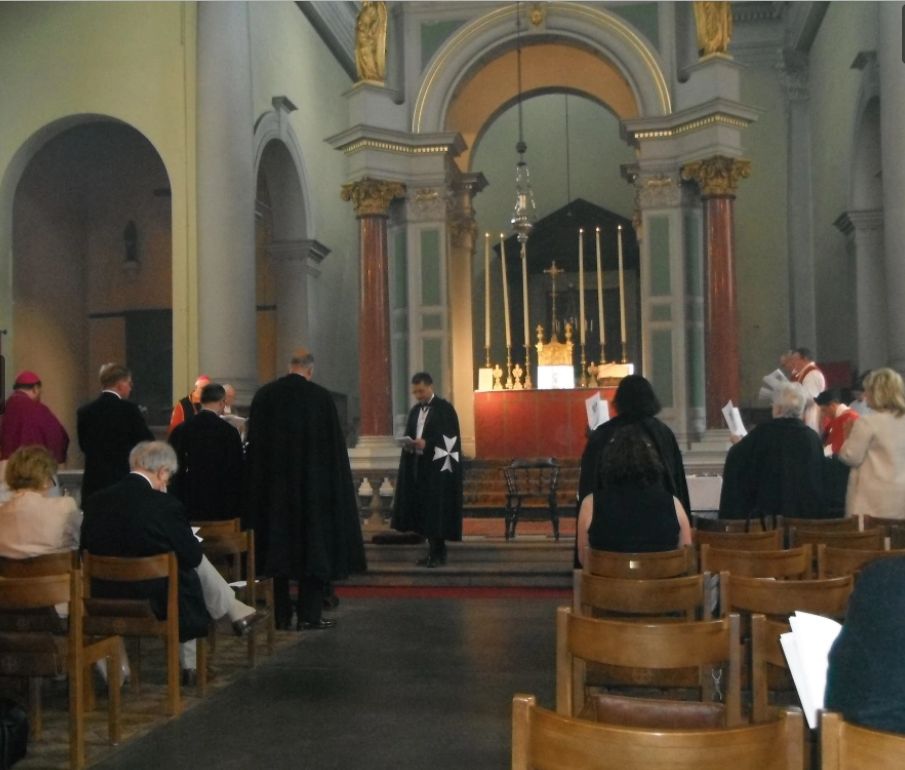
The reference here
was to Arnold Harris Mathew (see underneath a list of groups descending from
Mathew) who is usually seen as one of two (the other being Joseph René Vilatte)
most important founders of breakaway movements of the 19th and early 20th centuries.
The Strange World Of The Mimic Orders Of St. John And
Mimic Bishops
Intended as a
continuation of when we earlier were informed about a
self-styled Order of Saint John that attempted to take hold of some of the
resources of the Democratic Republic of the Congo, I soon found out that this
was not the only self-styled Order of Saint John to do so whereby in the latter
case it refers to the Old Roman Catholic Church Apostolic Order of Saint John.
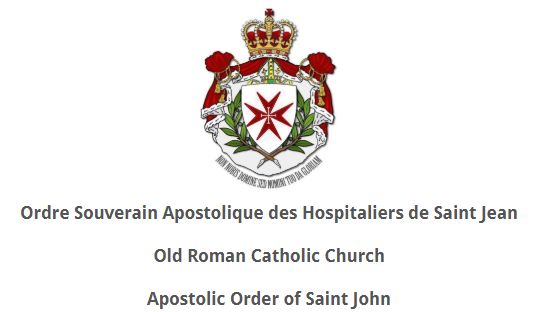
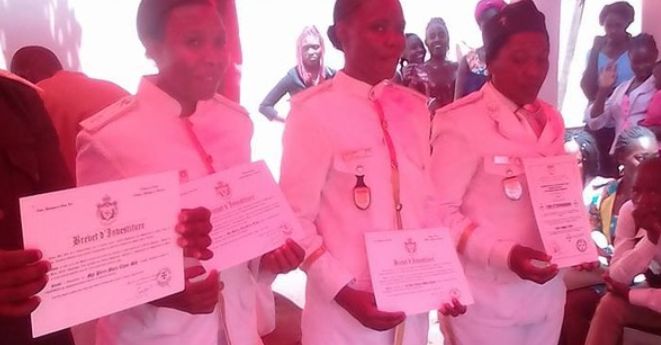
Accused of carrying
out a major scam below the visiting Bishop/Grandmaster of the Order:
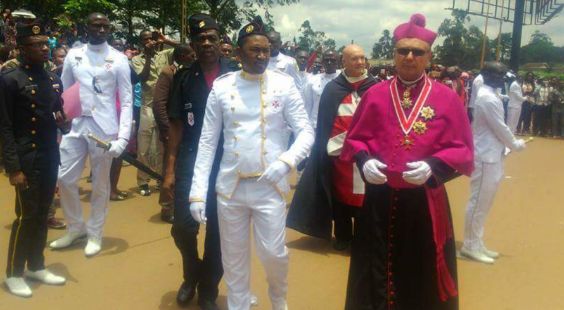
The Order first using
the name "The
African Commandery of the Military and Hospital Order of Saint John"
and next "Apostolic Order of Saint John", this in order to train
potential seminarians, was able to employ a large following which included a
General and other officials who were entrapped:
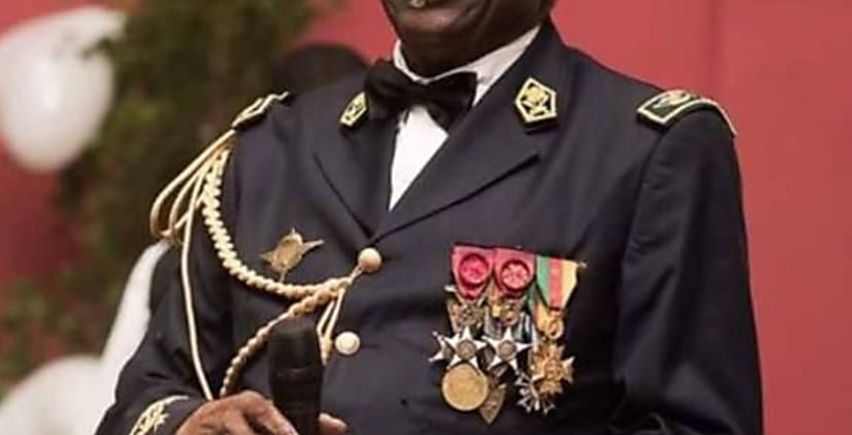
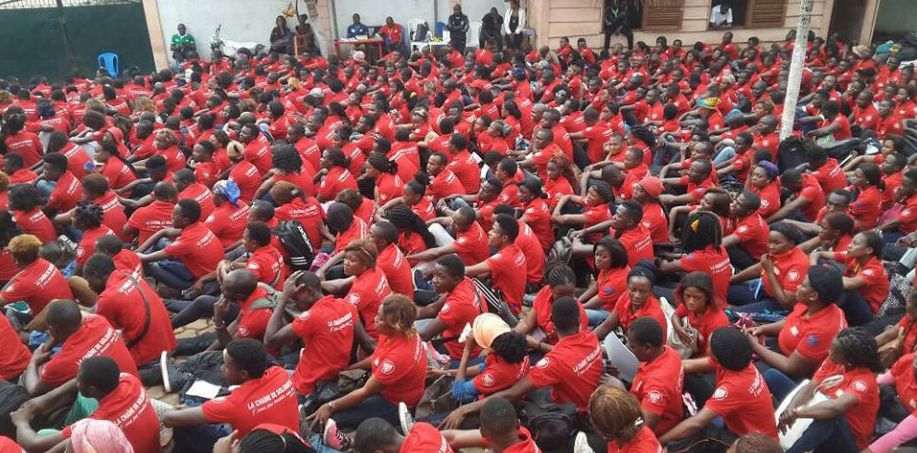
Not to mention murder and violent crimes:
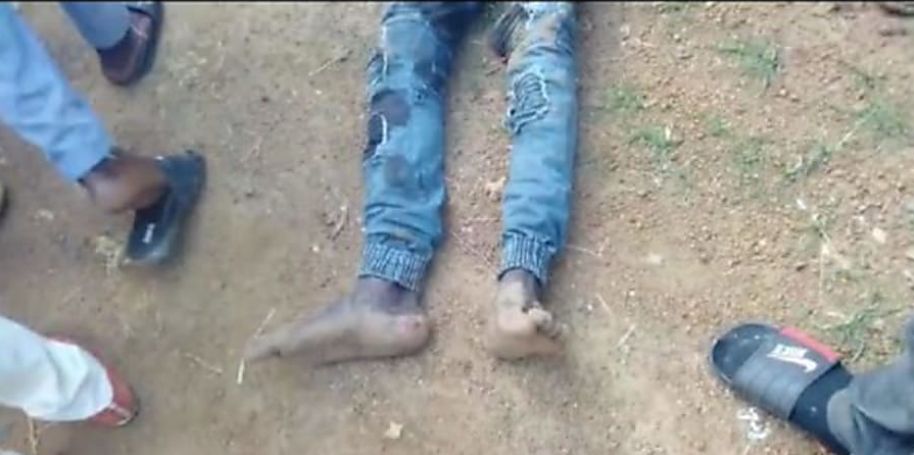
It started to come apart in May 2018 with a
high-level court case.
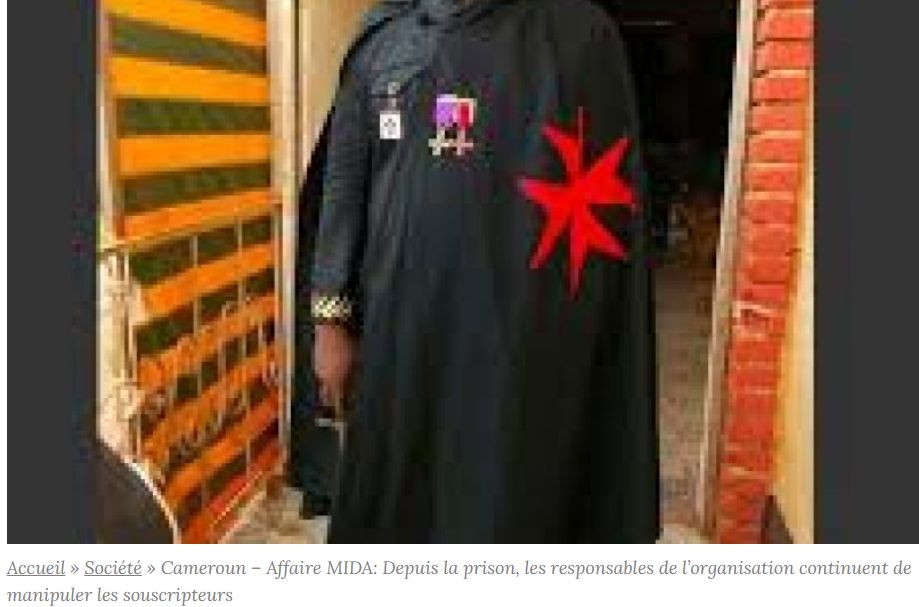
During 2019 new
revelations kept coming in the open.
Most significant the
Order (Bishop Berrier) also appears to have managed to obtain territories and sovereignty
for his FÉDÉRATION DES DEUX RIVES. Contrary to the above-mentioned court
case that made an end to one part of the endeavors, the Fédération des DEUX
RIVES is currently still active.
So what are these mimic Bishops sometimes called Episcopi Vagantes
David V. Barrett, in
the Encyclopedia of New Religious Movements, specifies that now Episcopi Vagantes is "those
independent bishops who collect several different lines of transmission of
apostolic succession, and who will happily (and sometimes for a fee) consecrate
anyone who requests it."1
There are discussions
which of the episcopal prerogatives the country bishops possessed. In fact, no
one is certain whether these rural delegates even received actual episcopal
consecration. Therefore Wandering Bishop or Episcopi Vagantes in most cases is not defined by any character
qualities, not by theological education or theological position. These bishops
are not elected by a canonical church, nor proposed as an ordain by a suffragan
and not bound to a historical episcopal see or consecrated by an 'official'
bishop according to the canonical procedure.
Until the Second
Vatican Council, the validity of the sacraments alone depends on the correct
intention and essential observance of the external rite. Since 1962/65,
however, the bishop longer the successor of a single apostate, but the
episcopal college in its entirety is the successor of the apostolic college.
And although one
finds many interpretations in books that promote the various schismatic
Churches (see also below) on can argue that a 'real' bishop is not a successor
of a sole apostle as only the synod/college of bishops in toto are heir to the
college of the apostles. And if so no Wandering Bishop has a 'real' apostolic
succession. There is no Holy Ghost in Wandering-Bishop-consecrations.
The Oxford Dictionary
of the Christian Church similarly states that this is the name given to persons
who have been consecrated bishop in an irregular or clandestine manner or who
have been excommunicated by the Church that consecrated them and are in communion
with no recognized see. A man is also included in this group when the number in
communion with him is so small that his sect appears to exist for his own sake.
Even various Old
Catholic but also irregular Anglican will present competing views of apostolic
succession which to mention them all would need a whole book if not several
books.
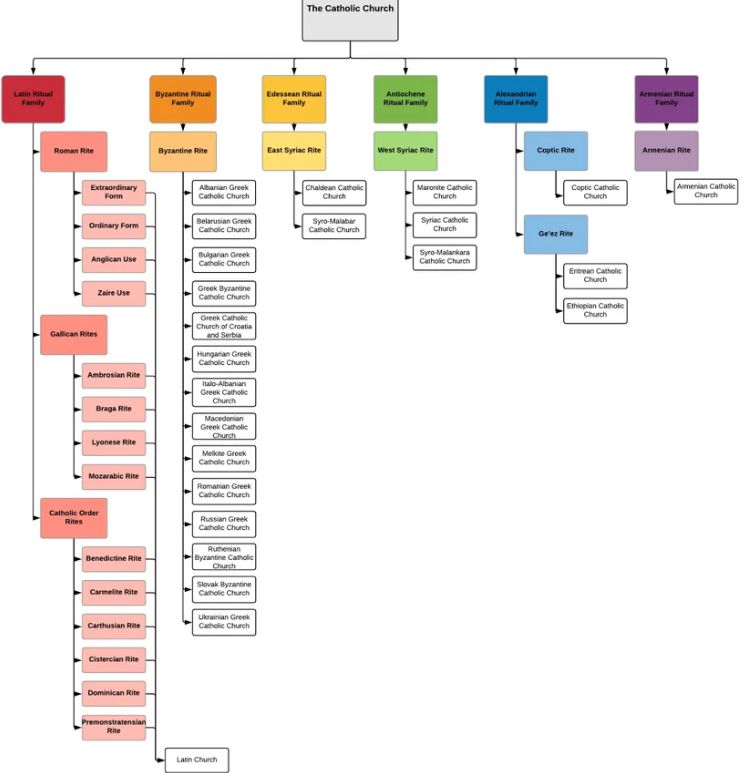
That is where one
often sees mention of an older Malabar tradition also called Syrian Christians
of India, Nasrani or Malankara Nasrani, or Nasrani Mappila, which are an
ethnoreligious community of Indian Christians originally from the state of
Kerala.
A second is the
Gallican Church was the Roman Catholic Church in France from the time of the
Declaration of the Clergy of France (1682) to that of the Civil Constitution of
the Clergy (1790) during the French Revolution.
And then there is the
term Old Catholic Church by groups which since the 1850s separated from the
Roman Catholic Church over certain doctrines, primarily concerned with papal
authority; some of these groups, especially in the Netherlands, had already existed
before the term.
But what this can be
an extremely complex topic one should not fail to mention two of the most
important Episcopi Vagantes
a Frenchman, Joseph René Vilatte a Parisian who emigrated to America at an
early age, where he later founded the American Catholic Church. And the above
mentioned Arnold Harris Mathew born in Montpellier, France as the son of Major
Arnold Henry Ochterlony Mathew (originally Matthews,
d. 1894). And again to show the potential complexity underneath is a ten-page
example of groups descending from Mathew.
While visiting India...
By the late
nineteenth century, some west Syrians made up the Syriac Orthodox Church led by
Mar Ignatius Peter IV of Antioch, then near present-day Mardin, Turkey.
Prior to his election
as Patriarch of Antioch, Ignatius Peter IV had traveled extensively on the
Continent as well as in England, where he was received in honor by the Archbishop
of Canterbury. Thus it was that he was acquainted with the history and legends
of knighthood. And sanctioned the organization of the Order of the Crown of
Thorns, and in 1892, which was much the same as that of the fraternal order of
Roman Catholic men known as the Knights of Columbus, which was established in
1882. This Order of the Crown of Thorns is the same as what later came to be
named the Old Roman Catholic Church Apostolic Order of Saint John.
René Vilatte
initially intended to join the Catholic priesthood but later moved toward
Protestantism (of various varieties). For a short while, however, he was a
member of the Methodist church in Montreal, Quebec. This did not satisfy him,
however, and during the following years he four times returned to the Roman
Catholic Church, once to the Methodists, became a Congregationalist minister,
and twice a Presbyterian.”2
In 1885, he
approached the PECUSA bishop of Fond du Lac, Wisconsin, Dr. Hobart Brown, to
ask about becoming ordained as a priest in that church. His name appears in the
official record of the diocese as a candidate for Holy Orders.3 At Brown’s
suggestion, Vilatte went for ordination to Dr. Herzog, the Old Catholic 4
bishop in Switzerland. In June 1885, Herzog ordained Vilatte as a deacon and
then as a priest; the new priest’s oath of canonical obedience, however, was
made to the Protestant Episcopal Church bishop of Fond du Lac.5
Although he
apparently served well in his work in his mission, at the time of Dr. Brown’s
death in 1888, Vilatte was “intriguing with the Old Catholics with a view to
being consecrated bishop.”6 When Dr. C.C. Grafton, Brown’s successor as the
PECUSA bishop of Fond du Lac, refused to consecrate Vilatte as “Bishop-Abbot”
of the American Old Catholics, Vilatte then entered into relations with the
Russian Archbishop Vladimir, “who, while not offering him consecration, appears
to have granted him some form of recognition.”7 Vilatte then claimed to have
been elected to the episcopate by the Old Catholics themselves, at a synod at
Duvall (Wisconsin?). In remarks printed in The Church Review, October 1898 to
January, 1899, Grafton remarked on the Synod, “The story that he was elected to
the bishopric of the Old Catholics is simply this:
He carried around a
paper amongst the few poor, ignorant people under his charge, which he demanded
that they should sign. Most of them complied, some of them being little
children. There is only one clergyman’s name on the petition and that,
according to the statement of the clergyman so named, was forged.”
Vilatte was finally
consecrated in Ceylon by “Archbishop Alvares” of the “Independent Catholic
Church of Goa and Ceylon.”8
The Order of the Crown of Thorns
Vilatte also merged
the Order of the Crown of Thorns with the Abbey-Principality.
The Patriarch of
Antioch, Ignatius Peter IV (sometimes counted as III) ), in 1875 traveled extensively in India, taking a
direct hand in the affairs of the Church when he personally consecrated Mar
Athanasios and Mar Cregorius. These latter two joined
Mar Julius, the Bishop of Ceylon, who in May of 1892, at the command of the
Patriarch, consecrated the Frenchman by birth but American citizen by
naturalization, Archbishop Joseph Rene Vilatte.
According to Dom Jean
Parisot he is the one who got Vilatte interested in the chivalric fraternities
so that Vilatte revived and combined a few into the Order of the Crown of
Thorns.
Some revived orders
mixed lay and cleric, men and women; some harbored esoteric theology or
incorporated Freemasonry. The Order of the Crown of Thorns did all of the
above. Parisot and Vilatte apparently spent a few evenings with another visitor
to Ligugé, the avant-garde novelist Jorge-Karl
Huysmans. Infamous for his portrayal of the esoteric underground in the novel Là-Bas (1891), Huysmans had applied to become a Benedictine
oblate. Later a friend of Huysmans would remark that Vilatte “looked like an
American athlete” and, bless his memory, “his Havanas
were excellent.”9
This Patriarch
sanctioned the organization of the Order of the Crown of Thorns, and in 1892,
in light of the heavy migration to the United States by people of European
stock, he conveyed to Archbishop Vilatte, the Grand Mastership of the order.
The intent of the establishment of this order in the New World by the Orthodox
Patriarch was much the same as that of the fraternal order of Roman Catholic
men known as the Knights of Columbus, which was established in 1882.
Archbishop Vilatte held office until his death on July 1, 1929.
A small group of
Frenchmen, on August 25, 1883, founded the Abbey of San Luigi in Northern
Africa. By its constitution this colony was independent and was known as the
Principality of San Luigi, with its princes elected by the citizens. The first
prince established the Order of the Lion and Black Cross as a national order of
knighthood. Plagued by disease and attacks by the natives, the remnants of this
small band returned to France, abandoning the Abbey. But its short history was
not to die, because on May 5, 1897, in an act legalized before the Mayor of
Seine, France, the Prince of the Abbey-Principality submitted his claims and
orders to the authority of Archbishop Joseph Bene Vilatte. It was in this
manner that the second of the San Luigi Orders came into being.
There has been a
discussion whereby the International Commission on Nobility and Royalty
condemned the claims of the sovereignty of the current (which they say is
self-styled) Abbey-Principality of San Luigi, to which San Luigi has responded
in their own manner.
Bertil Persson the
co-author of Independent Bishops: An International Directory (1990) when
inquiring about Joseph René Vilatte received the following reply:
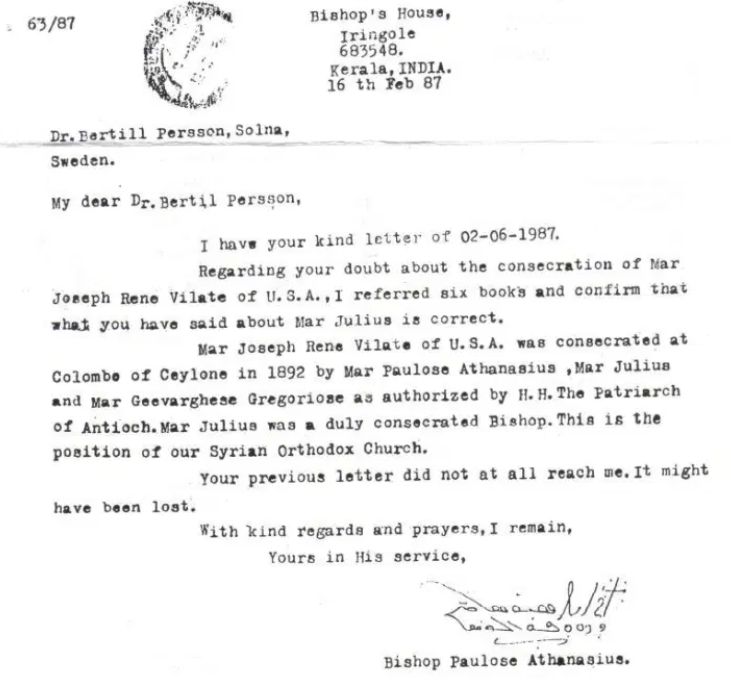
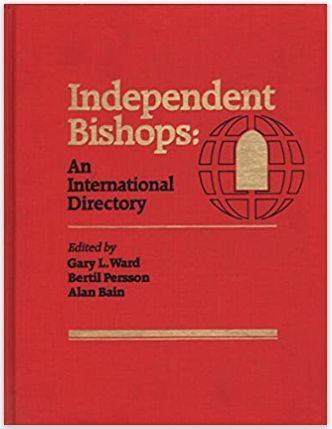
At the General Convention
of 1892, the Protestant Episcopal Church responded to this consecration with
certain resolutions. The bishops concluded that Vilatte had obtained his
consecration from a Church separated from Catholic Christendom because of its
non-acceptance of the Chalcedonian definition of the Person of the Lord Jesus
Christ. Also, they affirmed that Vilatte was never elected by a duly accredited
synod, and that he seemed anxious to obtain the episcopate from any body which would give it to him. Additionally, they
declared that these non-Catholic bishops had no jurisdiction or right to ordain
a bishop for any part of the diocese under the jurisdiction of the bishop of
Fond du Lac.10 They also found that more than two months before the time of his
so-called consecration, he was deposed from the sacred ministry.11 Therefore,
the Episcopal Church declared Vilatte’s orders null and void, and resolved to
send messages to the Old Catholics about this.
René Vilatte later pictured in the USA:
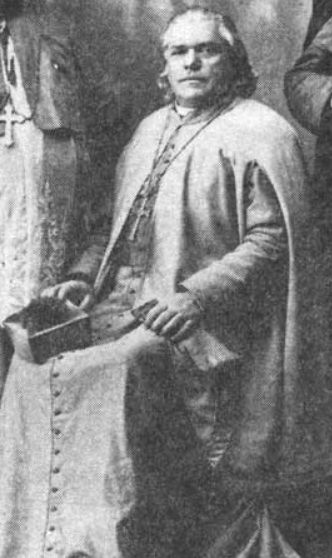
Both the above
mentioned Carmel Enrico Carfora and Vilatte were interested in events south of
the US border. The Brownsville Daily Herald wrote that Vilatte traveled in a
private railroad car with several investors. He began calling himself
"Archbishop Vilatte, of Texas".
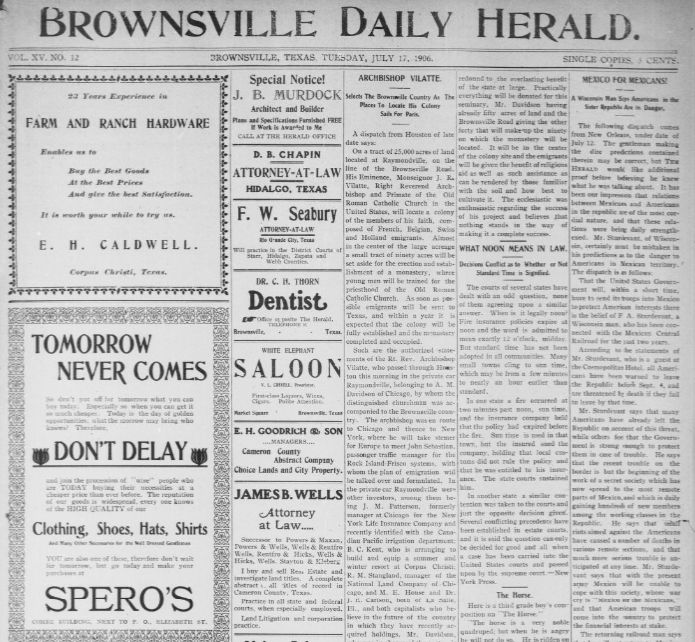
On October 1, 1910, Vilatte sailed to Europe to
recruit settlers.
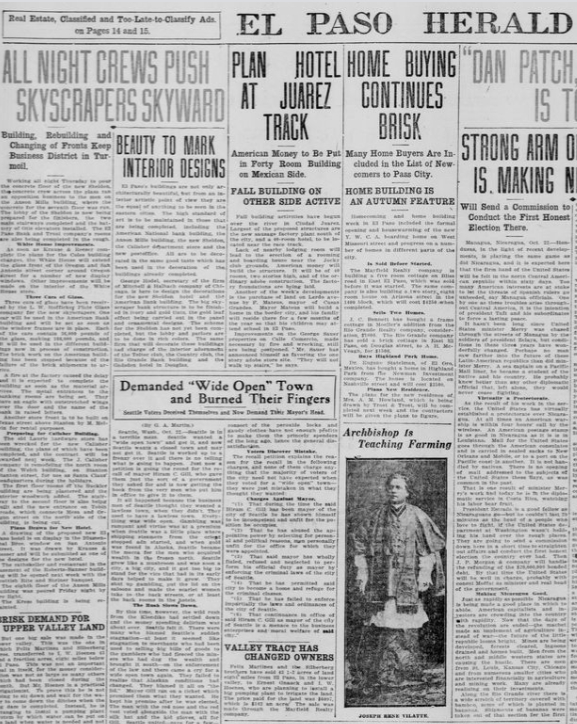
By 1914, the dynamic
energy of Vilatte was diminishing and in a synod held in Chicago on April 10,
1920, he offered to retire and named Frederick Ebenezer Lloyd as his successor
as Primate and Metropolitan of the American Catholic Church (ACC). On September
8, 1929, Lloyd consecrated John Churchill Sibley as Missionary Archbishop and
Vicar General of the Order of Antioch in England. The spread of the American
Catholic Church from 1920 until his death in 1933 was largely due to his
initiative.12
During his final
years, Vilatte worked very closely with Jean Bricaud
(1881-1934) to ensure that his papers,
journals, and other valuable objects could be conveyed in secret to safekeeping
in the United States. Jean Bricaud while made a
Bishop in by Vilatte is also known as an occultist and purveyor of Occult
Masonic lodges.
Bricaud early on became a member of the Ordre Martiniste
founded by Gérard Encausse (alias Papus).
Earlier a member of the Theosophical Society Papus
set about laying the groundwork for a separate movement, which he called Occultisme. By late 1889, Occultism had a journal of its
own, L 'Initiation. A year later, Papus established a
central Occultist organization, the Groupe Indipendant
d'Etudes Esoteriques, and
formally broke with the Theosophical Society. During the next decade, Occultism
expanded, emerging as the most vital heterodox
movement in France.
In 1907 Bricaud, with the help of Papus
and other Martinists, broke with the L’ Eglise Gnostique Universelle Catholique and
founded, together with Papus and Fugairon,
the L’Eglise Catholique Gnostique. In 1908 the church changed its name to the ‘L’Eglise Gnostique Universelle’, and in 1911 became the ’official church' of
the Martinist Order. Bricaud
was also initiated into the Memphis-Misraim rite and
he was a disciple, like most of the leading Martinists
at the time, of Master Philippe. He studied the rites of Willermoz
and Pernety, the Elus
Cohen, Stricte Observance, les Philalethes,
and les Philadelphes. The latter were a plethora of
similar associations some of them who went back to J. B. Willermoz,
a Lyon silk merchant. And to which one also could ad
Fabre Palaprat's NeoTemplar invention of which the Grandmaster in the
USA later became King Peter II of Yugoslavia who went to live in the USA where
since 1962 until his death he served as the Royal Patron of the self-styled
Knights Templar Order and is also known from his involvement with a breakaway St.Jean Order that was originally founded by Charles
Pichel.
We early on already
mentioned Vilatte in the context of a remark in Dan Browns The Da Vinci Code
and Vilatte as a key figure in the so-called Gnostic
Churches which consecrated Freemasons and occultists as bishops.
Not unlike Viatte where the Protestant Episcopal Church responded to
this consecration with certain resolutions, Bishop Mathew was repudiated by the
Dutch Old Catholics on the ground that his consecration had been based upon a
misrepresentation.
In December 1910, De
Oud-Katholiek concluded that Mathew had "given
up communion with the other Old Catholics" when he acted against the
Convention of Utrecht. He ignored "his duty to inform" the IBC prior
to "any consecration", so "that the case may be duly examined
and all precautions taken that no unworthy person be consecrated;" he
consecrated men who belonged to another Church "knowing that they were
Roman Catholics and would probably remain so"; he consecrated alone
without need and in secret.13
And the 1920 Lambeth
Conference, in its resolution No. 27. declared: "We regret that on a
review of all the facts we are unable to regard the so-called Old Catholic
Church and its extensions overseas, as a properly constituted Church, or to
recognize the orders of its ministers..."
As for Arnold Harris
Mathew's involvement with the occult Peter Anson, the author of Bishops at
large wrote that, for at least two years, Mathew was "in close touch with
leading Theosophists, apparently without investigating the orthodoxy of their beliefs,"
and believed that Mathew "had no excuse" for not understanding the
cult of Maitreya beliefs held by the majority of his clergy. The identification
of Christ as Maitreya was the idea of
Theosophist Charles Webster Leadbeater. According to Anson, the majority
of clergy involved with Mathew were members of the Theosophical Society and the
Order of the Star in the East (OSE). Another development making use of Mathew's
lineage came in
the wake of the unpalatable Aleister Crowley.
John Kersey who
investigated this subject wrote that "there are still unpublished letters
of Mathew in the archives of various churches; these archives are not open to
the public, and so it has not been possible to consult them."
John Kersey (the
Prince-Abbot of
the Abbey-Principality of San Luigi), not unlike Theosophist (including a scholar of Gnosticism and Jungian
psychology) Stephan Hoeller was also made a Bishop in the tradition
of Ronald Powell (Richard Duc de Palatine) and is the author
of Joseph-René Vilatte (1854-1929): Some Aspects of his Life, Work, and Succession.
Organisational summary of groups descending from Arnold Harris
Mathew
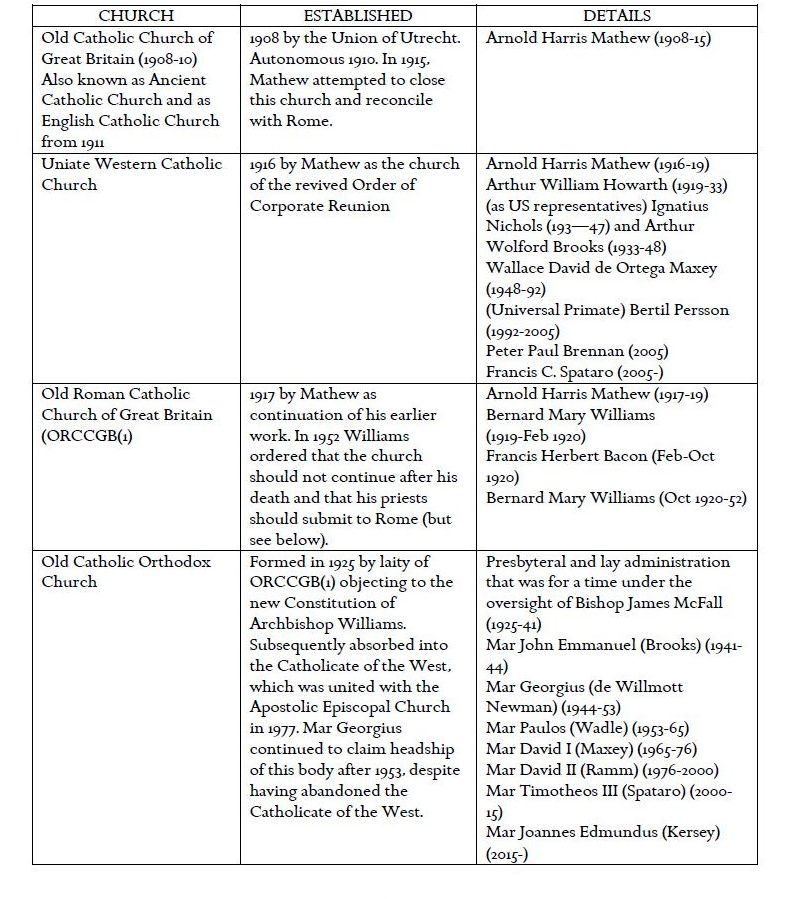
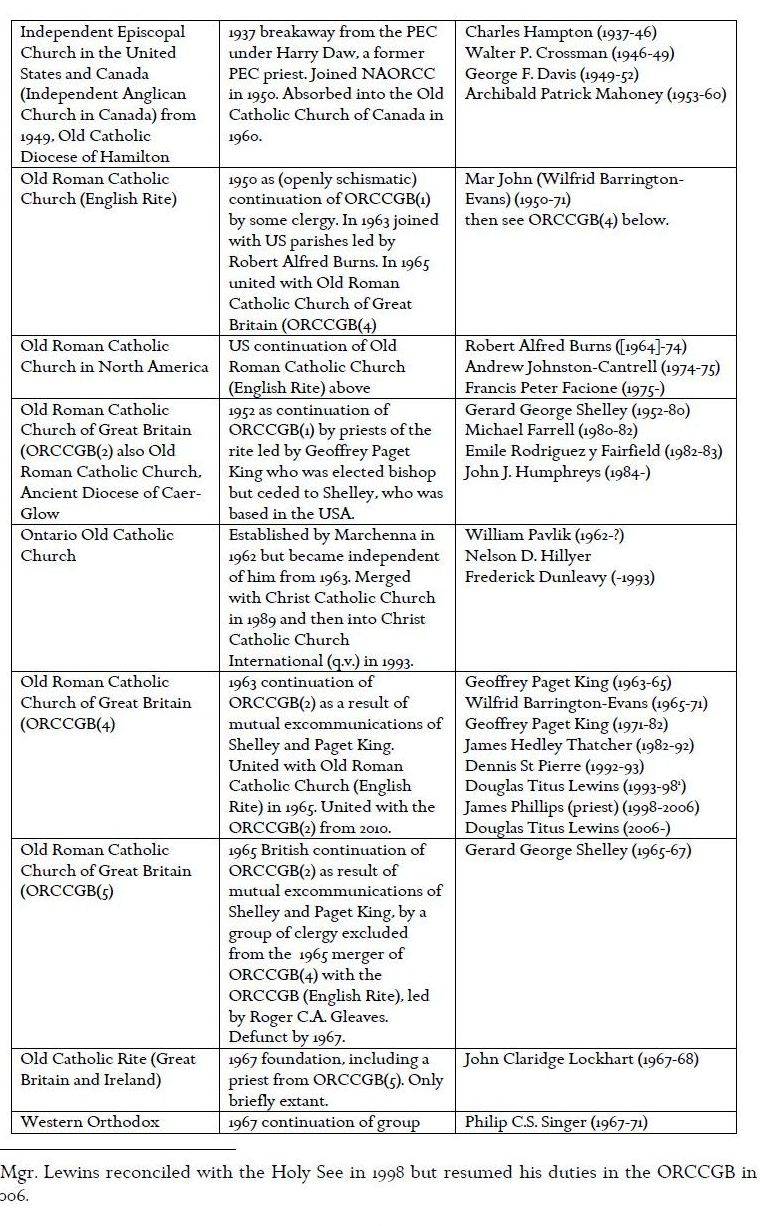
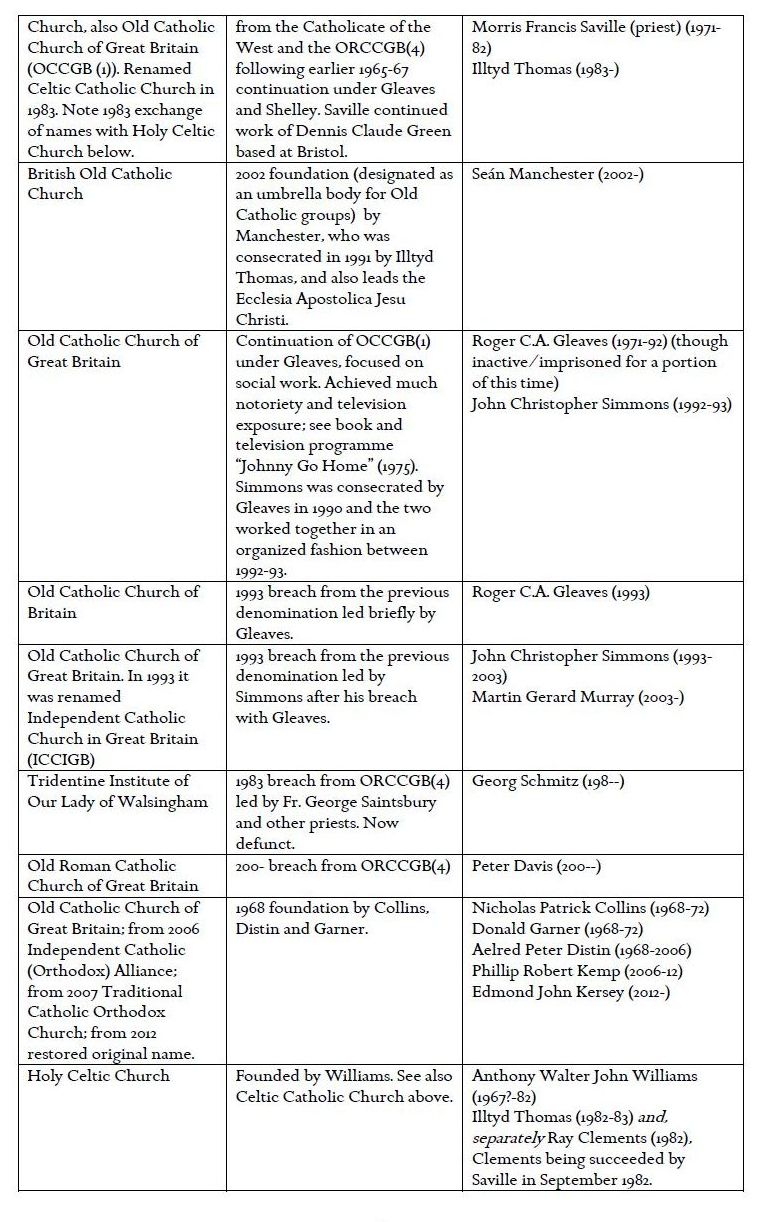
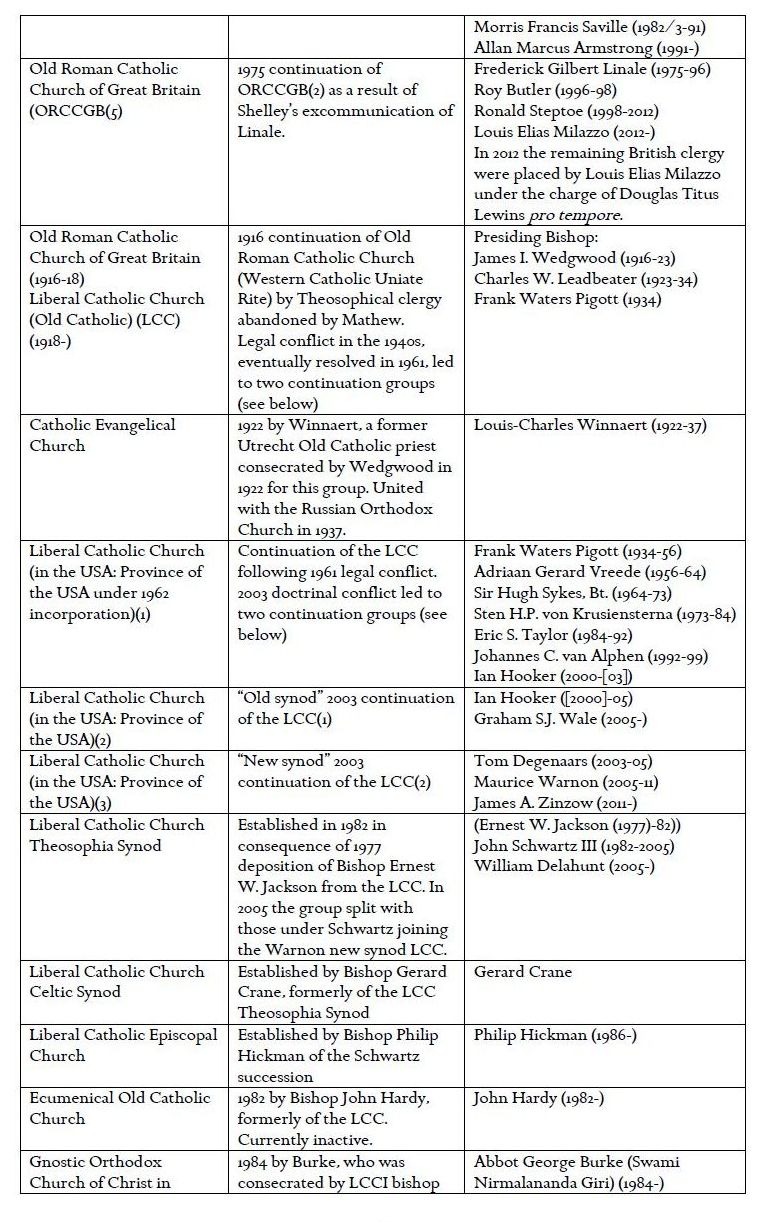
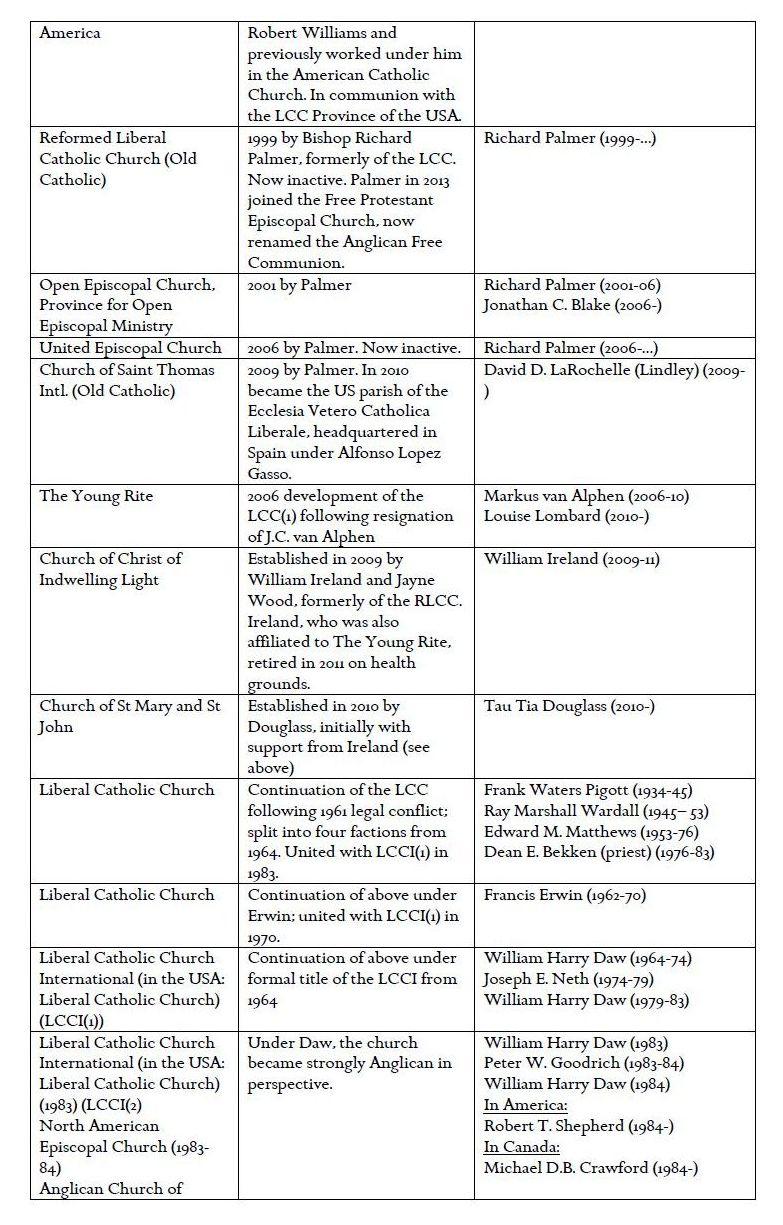
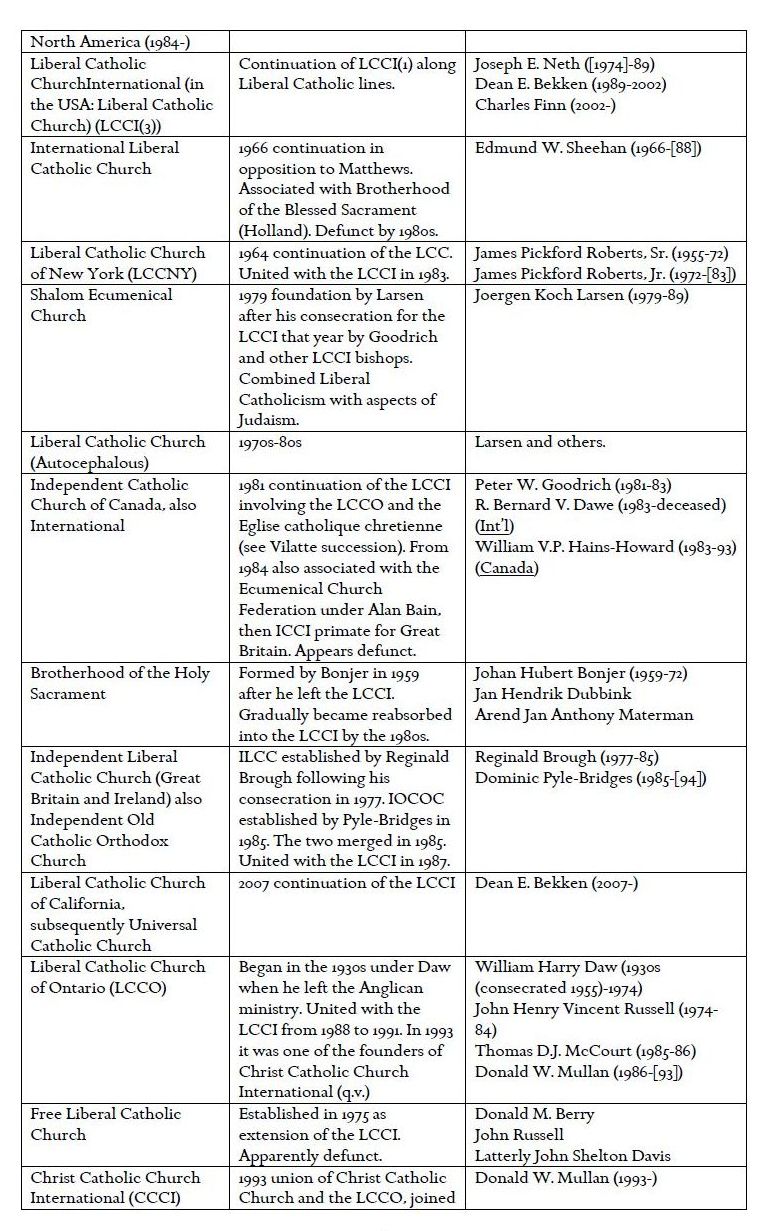
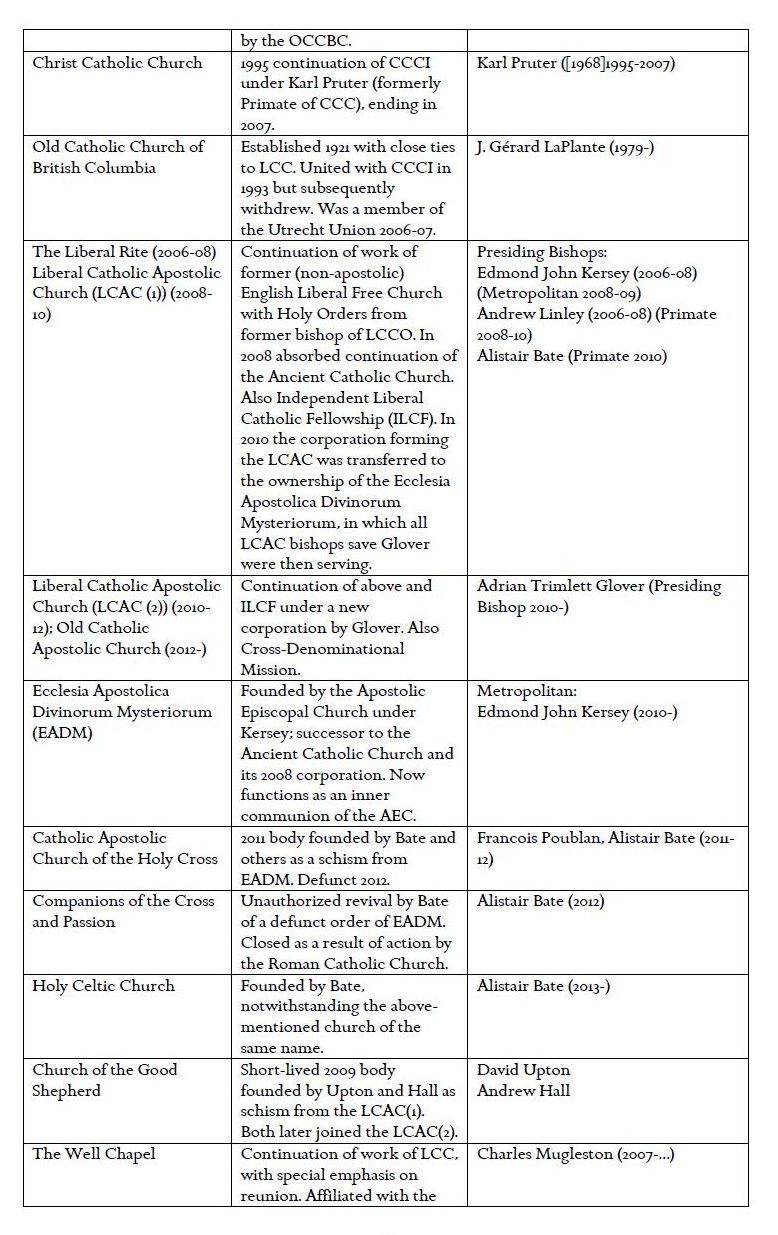
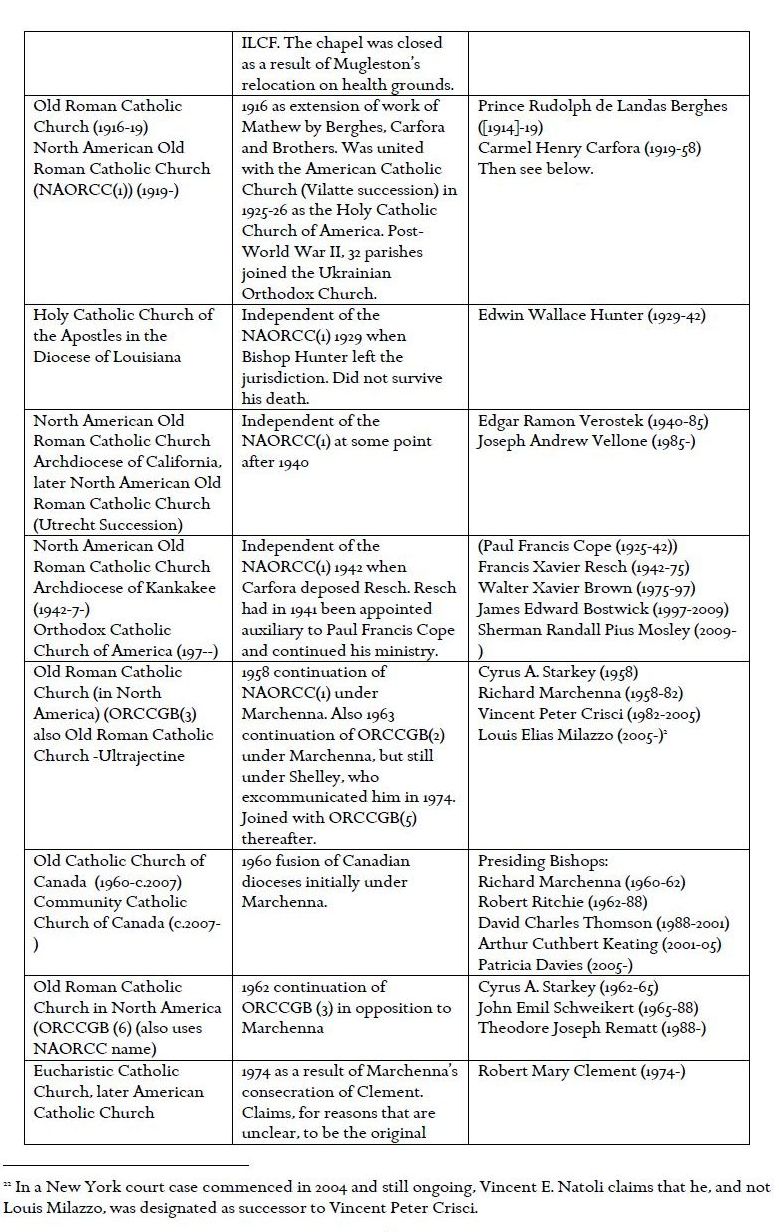
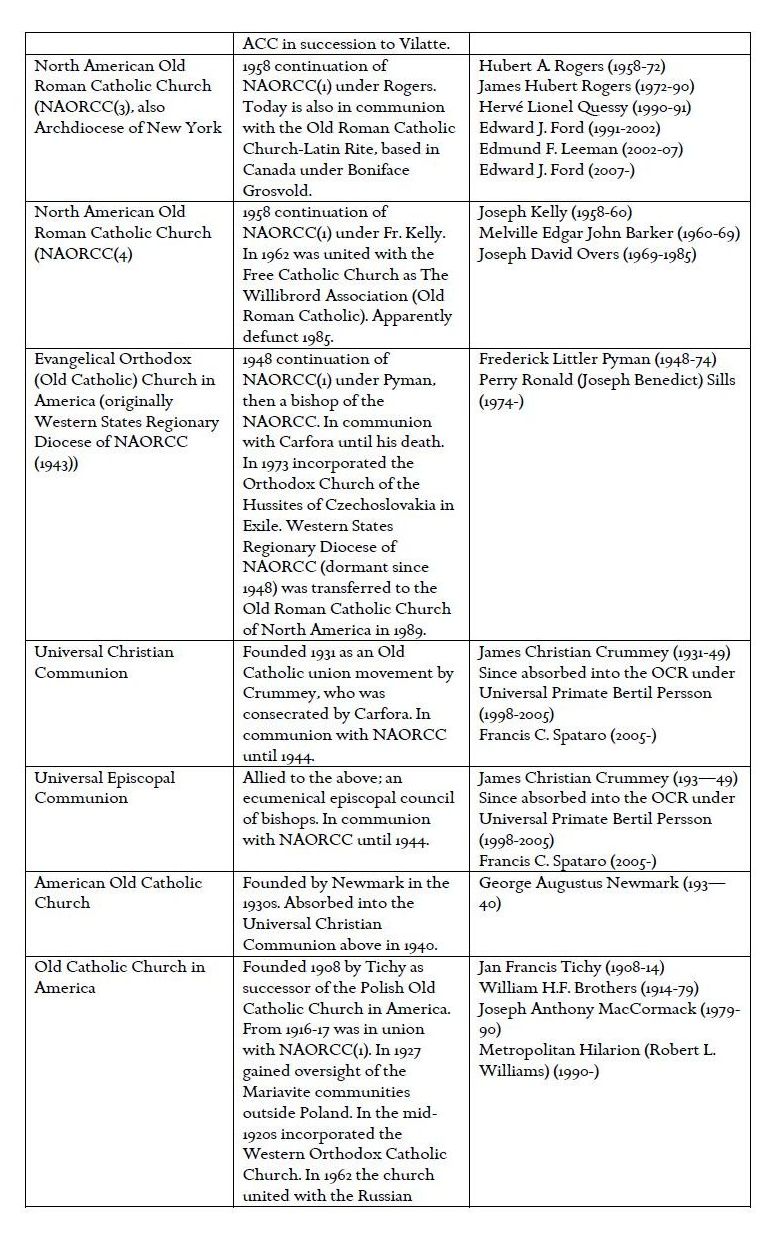
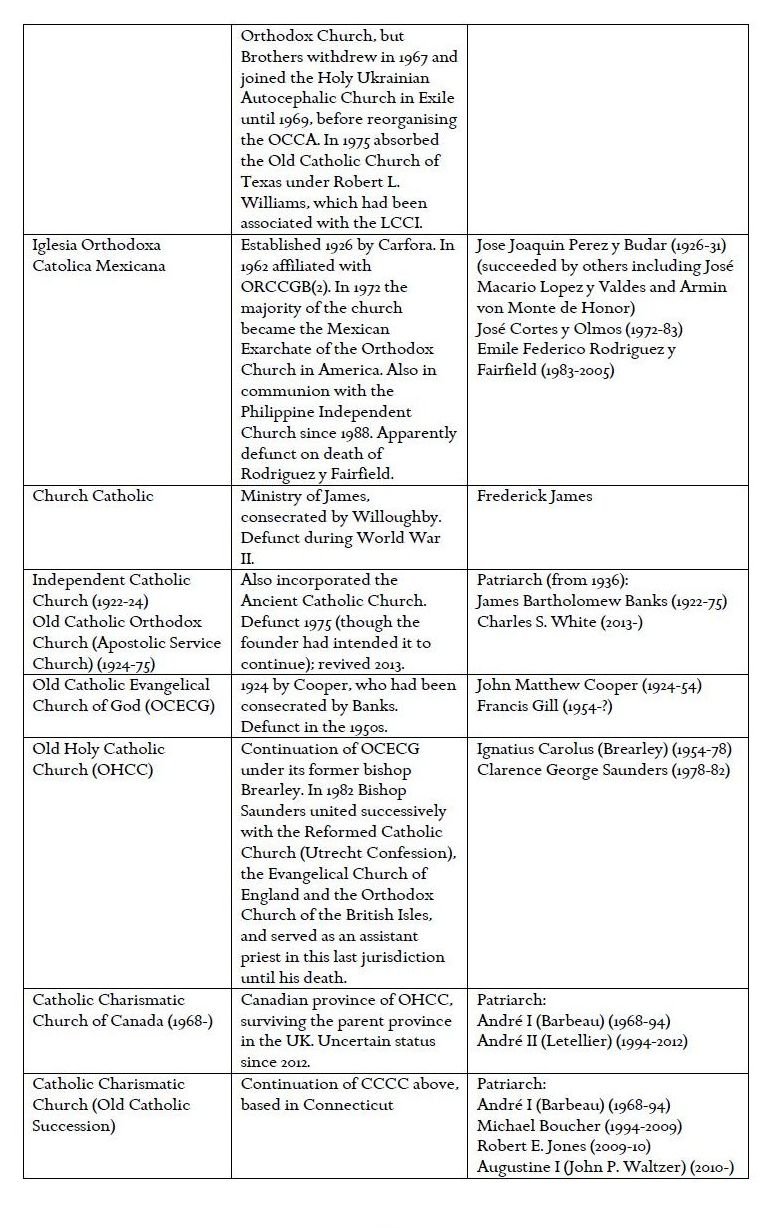
At the time of
writing, information about the Commandery of the Military and Hospital Order of
Saint John sponsored "Government" information is still coming in.
As for the myriads of
self-invented Orders of St.John, many of these orders
took on the appellation "of St. John", claiming to be continuations
of various alleged offshoots of the Russian Orthodox priory this in spite of
the fact that there is no Russian
tradition.
Other self invented Orders
of St. John group together in federations and create pictures like this:
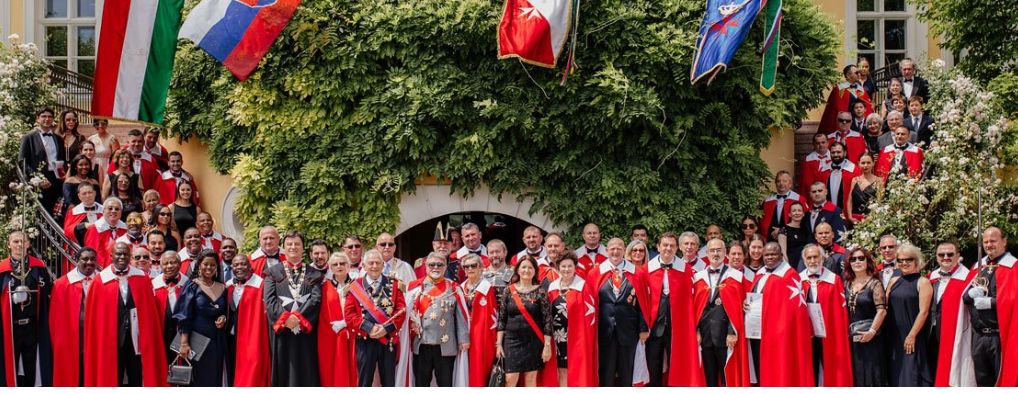
1. Barrett, David V.
(2006). "Independent episcopal churches". In Clarke, Peter (ed.).
Encyclopedia of New Religious Movements. p. 301. ISBN 9780415267076.
2. Henry R T
Brandreth, Episcopi Vagantes
and the Anglican Church, 2006, 47.
3. Ibid.
4. The Old Catholics
were a movement in German-speaking Europe which rejected the First. Vatican
Council’s (1870) declaration of the dogma of papal infallibility. The historian
and theologian J.J.I. von Döllinger (1799-1890), with
others, founded Catholic churches that were not in communion with Rome. The
separatists designated themselves “Old Catholics,” because they claimed Rome
had created a new church through decrees such as those of the Vatican Council.
Good relations have existed between the Anglicans and the Old Catholics since
the movement’s beginning; in 1925, the Old Catholics recognized Anglican
ordinations, and later obtained full communion with the Church of England (in
1932), and most of the other Anglican churches.
5. Brandreth, 47, 48.
6. Ibid., 48.
7. Brandreth, 48.
8. Ibid., 49, 50.
9. See Serge A.
Theriault, Msgr. René Vilatte: Community Organizer of Religion, 1854–1929
(Berkeley: Apocryphile Press, 2006), p. 149 n196. On
smoking Cubans with Huysmans, see Peter Anson, Bishops at Large (1964;
Berkeley: Apocryphile Press, 2006)p. 120.
10. Ibid., 52, 53.
11. Footnote 1 from
Brandreth, 53. “He was degraded from the priesthood and excommunicated by the
Protestant Episcopal Church on 21 March 1892.”
12. Henry Brandreth, Episcopi Vegantes, p. 36. See
also.
13. Claude B Moss, The
Old Catholic Movement: its origins and history. Independent Catholic heritage
series (reissue, with additions and corrections, of 2nd ed.). Berkeley: Apocryphile Press, 2005.
For updates click homepage here